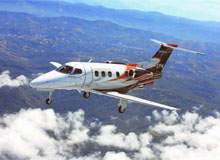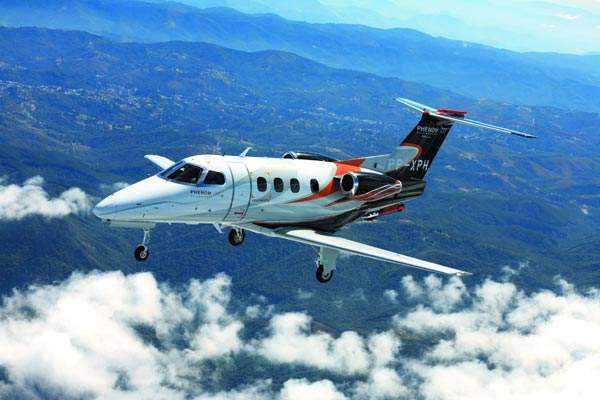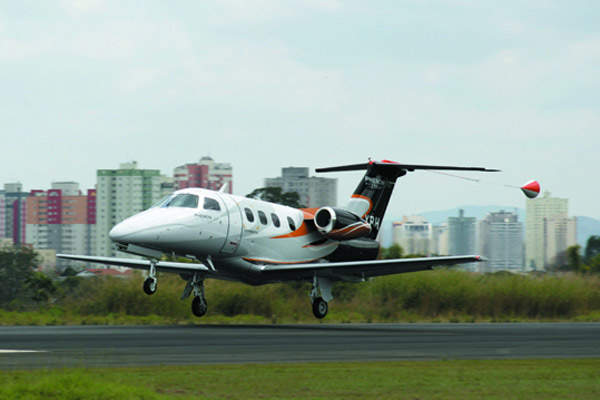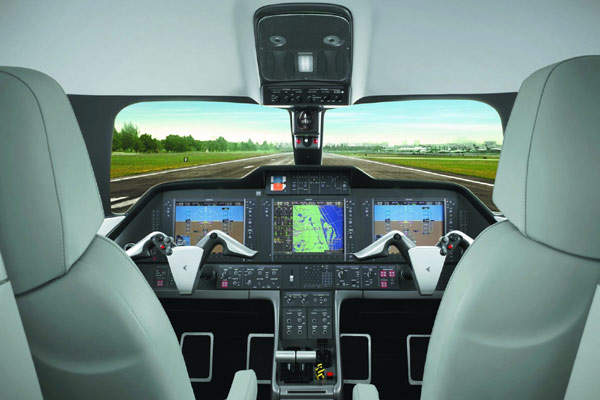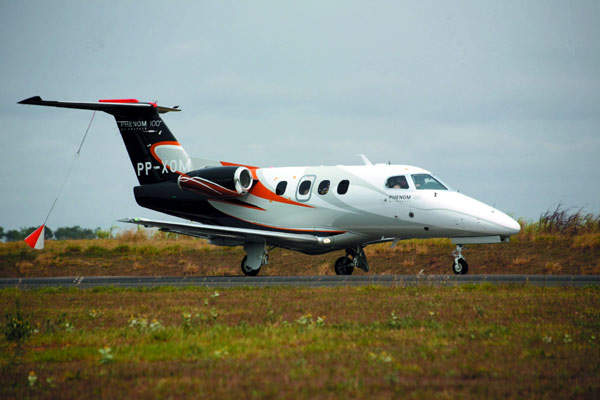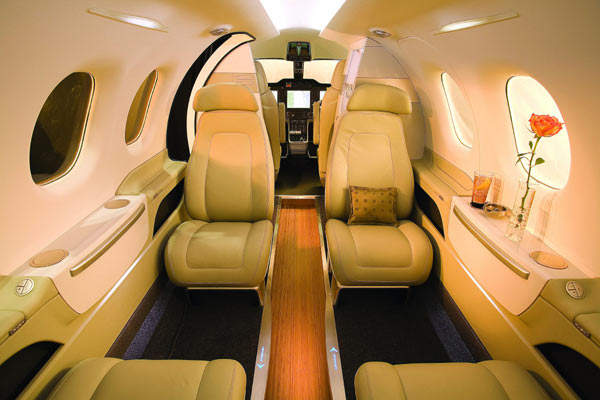Embraer’s new Phenom 100 very light jet was launched, along with the Phenom 300 light jet, in May 2005. The maiden flight of the Phenom 100 took place in July 2007. Four aircraft took part in the flight test programme and the aircraft received Brazilian FAA and EASA certification in December 2008. The first aircraft was delivered to a US customer, Burt Rutan on 24 December 2008. The Phenom 100 costs $3.91m.
Australia’s Civil Aviation Safety Authority (CASA) approved a type certificate to Embraer’s Phenom 100 in July 2009. This approval was followed by certifications from Brazil’s National Civil Aviation Authority (ANAC) and the US’s Federal Aviation Administration (FAA) in December 2008. The European Aviation Safety Agency (EASA) approved a certification in April 2009.
The jet received type certification from the Argentine Aviation Authority in August 2009. It is certified by 23 civil aviation authorities. Recent approvals include Civil Aviation of Indonesia, Egyptian Civil Aviation Authority, Transport Canada Civil Aviation and Dominican Civil Aviation Institute.
The aircraft operates in 29 countries including Argentina, Australia, Austria, Belgium, Brazil, Canada, Colombia, the Dominican Republic, Ecuador, Egypt, the UK, Finland and Germany.
In January 2011, the Phenom 100 received certification from the ANAC and EASA, which allows the aircraft to have a belted toilet. Embraer is expecting approval from the FAA very soon.
Embraer Phenom 100 orders and deliveries
Embraer has received over 800 orders for the Phenom 100 and 300 jets. The first Phenom 100 in Brazil was delivered to Algar Aviation, from Uberlândia, Minas Gerais, for its charter operations; Wellborn Participações, from Londrina, Paraná; and Locar Guindastes e Transportes Intermodais, from São Paulo in June 2009. Embraer plans to manufacture up to 150 aircraft a year. As of July 2009, around 20 Phenom 100 jets are operational worldwide.
Embraer delivered two jets in 2008 and 15 in second quarter of 2009.
The 100th Phenom 100 aircraft was delivered in January 2010 to US-based Jetsuite.
Embraer delivered two Phenom 100s to Belgian company Abelag in November 2010.
Mumbai-based Invision Air received its first delivery of the 18 orders placed in November 2010.
The 200th Phenom 100 aircraft was delivered to the Swift Aviation Group in May 2011.
In June 2011, a Phenom 100 was delivered to India’s Titan Aviation. Another two aircraft are expected to be delivered to Titan Aviation in 2012.
Phenom 100 design
The aircraft is of 20% carbon-fibre composite and 80% metal construction. The Phenom 100 has a low straight wing with a slight sweep on the leading edge, two rear mounted engines and a T-tail.
The flight controls are driven by mechanical cable.
Flight deck
The Phenom 100 Prodigy flight deck is based on Garmin’s all-glass, fully-integrated G1000 avionics suite. The flight deck is similar to that in large commercial jets and features two primary flight displays (PFD) and one multi-function display (MFD) which are interchangeable.
The system integrates all primary flight, navigation, communication, terrain, traffic, weather, engine instrumentation, and crew-alert system data, and presents the composite information in high brilliance, sunlight-readable colour on the three 12in high-definition active matrix liquid crystal displays.
The Garmin GFC700 autopilot provides pitch trim, speed trim and roll, pitch and yaw control. There is also a dual integrated solid-state attitude and heading reference system (AHRS) and dual integrated RVSM-compliant digital air data computers.
The aircraft is fitted with a mode-S transponder for traffic information, a terrain awareness system, a XM satellite weather data link, a horizontal and vertical scan digital weather radar, and dual radio communications.
The flight deck is fitted with an alphanumeric keypad control.
Cabin
The interior is designed by BMW Group Designworks USA. The cabin typically seats four passengers and can be customised in three seating configuration options: a business cabin layout with two forward and two rear facing reclining leather seats, or an air taxi layout with four forward or six forward facing seats. Each seat is fitted with pilot-passenger communications and a laptop port.
The cabin is fitted with a wardrobe or refreshment centre and satellite communications. There is a 1.55m³ baggage storage volume, including a non-pressurised 1.27m³ area in the aft section of the fuselage. The aft baggage space is accessed via an external door.
The cabin door is on the port side.
Engines
The aircraft is fitted with two rear-mounted Pratt & Whitney PW 617-F engines with a take-off thrust of 7.18kN. The power plant has dual full authority digital engine control (FADEC).
Landing gear
The trailing link main landing gear is hydraulically operated and fitted with anti-skid and brake-by-wire.
Eaton Corporation was selected to supply the hydraulics system.
Phenom 100 performance
The range of the Phenom 100 with four occupants will be 1,160nm (2,148km) with NBAA IFR reserves (35 minutes of holding); or 1,320nm (2,445km) with NBAA VFR reserves (45 minutes).
The aircraft is capable of flying at 41,000ft (12,497m), has a maximum operating speed of Mach 0.70 and is designed for short-field take-offs, with a take-off run of 1,040m or 3,400ft.
These characteristics allow non-stop flight from London (UK) to Reykjavik (Iceland), Lisbon (Portugal), Tunis (Tunisia), Sofia (Bulgaria) or Stockholm (Sweden).

